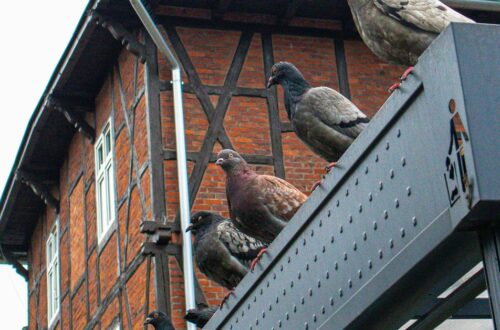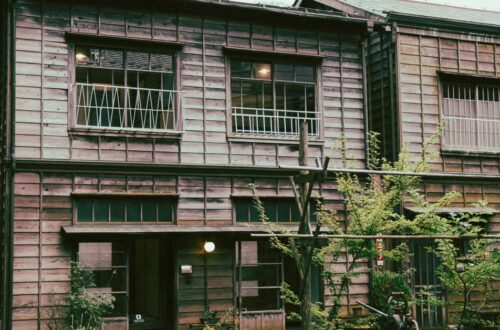What If Your Neighborhood Could Be Key to Your Healthier Future?
Have you ever stopped to consider how your surroundings—those familiar streets, the parks you stroll through, or even the local grocery store—could significantly influence your health? It’s a curious notion, isn’t it? I mean, we often think of health as something personal, deeply embedded in our choices about diet and exercise. However, the environment we inhabit plays a crucial role in shaping our well-being, sometimes in ways we might not immediately recognize.
The Silent Influence of Our Environments
Imagine for a moment living in a neighborhood with well-maintained parks, sidewalks teeming with pedestrians, and a community that supports healthy lifestyle choices. Sounds idyllic, right? Well, research suggests that these factors could lead to lower rates of obesity, diabetes, and even heart disease. In contrast, living in areas with limited access to green spaces or healthy food options can contribute to a slew of health problems.
What Studies Reveal
Several studies have highlighted the connections between neighborhood characteristics and health outcomes. For instance, a significant number of researchers have indicated that green spaces in urban areas encourage physical activity. Just think about it: I remember when I lived in a neighborhood with a beautiful park at the end of the street. It was impossible not to take evening walks or jog on the weekends. Those little things add up!
Neighborhood Walkability and Health
Walkability—now there’s a term that can spark some debate! In essence, it’s all about how friendly an area is to walking. According to the American Journal of Preventive Medicine, people living in walkable neighborhoods are more likely to meet the recommended levels of physical activity. They also tend to have healthier weights. But what constitutes a “walkable” community?
Key Characteristics of Walkable Neighborhoods
- Proximity to Amenities: Grocery stores, parks, schools, and restaurants should be within a reasonable distance, reducing the need for a car.
- Pedestrian Infrastructure: Safe sidewalks, crosswalks, and well-lit areas contribute to a sense of security while walking.
- Mixed-Use Development: Having residential, commercial, and recreational spaces close together encourages foot traffic and community interaction.
In my own experience, I’ve noticed that when I can walk to a local café to grab my morning coffee instead of driving, it not only adds to my daily exercise but also boosts my mood. There’s something about being out in the world, breathing fresh air, and soaking in the atmosphere.
Access to Healthy Foods
Let’s pivot to another crucial aspect of neighborhood health: access to nutritious food. The reality is that food deserts—areas where residents have limited access to affordable and nutritious food—pose a serious challenge to healthy living. Some studies suggest that individuals living in food deserts are more likely to experience diet-related health issues.
Breaking Down Food Deserts
Food deserts aren’t just about having a lack of grocery stores; they often correlate with socioeconomic challenges. In neighborhoods where fresh produce is scarce, fast food chains and convenience stores often take over, offering processed foods that are cheaper but far less nutritious.
In my town, we had a local initiative that aimed to combat this issue by introducing farmers’ markets. The change was palpable! Not only did it provide fresh fruits and vegetables to the community, but it also fostered a sense of togetherness—neighbors chatting, families gathering, and children excited about trying new foods. That’s the kind of environment that encourages healthier eating habits.
The Role of Community Engagement
Let’s not underestimate the power of community engagement in promoting health. A neighborhood that encourages social interaction can lead to better health outcomes. Social support—whether through friends, family, or community groups—plays a vital role in maintaining a healthy lifestyle.
Building Social Connections
Consider this: when you know your neighbors, you’re more likely to participate in community activities, whether it’s joining a local yoga class or participating in a neighborhood cleanup. I fondly recall the time my neighbors and I organized a block party. It wasn’t just about having fun (though there was plenty of that); it also sparked conversations about health initiatives, shared fitness tips, and even created a little walking group. Before we knew it, we were all encouraging one another to get moving!
Green Spaces and Mental Well-being
There’s a reason urban planners and health advocates emphasize the importance of green spaces. Access to parks and nature is not just a luxury; it’s essential for mental health. Research has shown that spending time in nature can reduce stress, anxiety, and depression. Imagine strolling through a park, the sun shining, birds chirping—doesn’t that sound refreshing?
The Healing Power of Nature
One study published in Environmental Science & Technology found that just a 20-minute walk in a green space can significantly boost mood and overall well-being. I remember a particularly tough week at work; I took a walk in a nearby park, and it felt like my stress melted away with each step. Nature has a way of grounding us, doesn’t it?
The Importance of Safety
It’s tough to think about health without considering safety. If people feel unsafe walking or biking in their neighborhoods, they’re less likely to engage in physical activity. A neighborhood that is perceived as unsafe can lead to a sedentary lifestyle, which comes with its own health implications.
Creating Safe Spaces
Communities can work together to improve safety through neighborhood watch programs, better street lighting, or even community policing initiatives. I recall a time when our street got together to discuss safety concerns—by the end, we organized a neighborhood patrol and improved our lighting. Not only did it make us feel safer, but it also encouraged more evening walks and gatherings. It’s fascinating how a little bit of proactive engagement can create a ripple effect!
Transportation and Health
Transportation options can also shape our health. Public transit, bike lanes, and walkable streets promote physical activity. When people can easily walk or bike to their destinations, they’re more likely to incorporate exercise into their daily routines.
Rethinking Transportation in Neighborhoods
In cities where public transport is accessible, residents often report higher levels of physical activity. For example, a friend of mine who lives in a city with excellent public transit swears by it. She often walks to the bus stop, takes the train, and walks again to her workplace. It’s not just about getting from point A to B; it’s about creating a lifestyle that values movement.
Empowering Individuals Through Education
Education is a cornerstone of health, and neighborhoods that prioritize health education can empower individuals to make better choices. Community programs that provide information about nutrition, exercise, and mental wellness can lead to healthier populations.
Examples of Effective Programs
Many communities have implemented programs that focus on educating residents about healthy living. For instance, one community offered free cooking classes that emphasized using fresh, local ingredients. Participants not only learned new recipes but also connected with others who shared similar health goals. I remember attending one of these classes, and it was both fun and enlightening—who knew I could make such a delicious kale salad?
The Future of Community Health
As we move forward, it’s essential to recognize the interconnections between our neighborhoods and our health. Local governments, organizations, and even residents themselves must collaborate to create environments that foster health and well-being.
Innovative Approaches
Some cities are already taking steps in the right direction. Initiatives that incorporate urban gardening, community fitness programs, and health workshops can transform neighborhoods into hubs of wellness. Imagine a future where neighborhoods are designed with health in mind—where every street corner offers a path to better living.
Conclusion: Your Neighborhood and You
So, what if your neighborhood could be key to your healthier future? The evidence suggests that it certainly can! By fostering walkability, access to healthy foods, community engagement, safety, and education, neighborhoods can significantly influence our health outcomes. It’s a collective effort—one that requires participation from all corners of the community.
As I sit here reflecting on this topic, I can’t help but feel a sense of optimism. We have the power to shape our environments and, in turn, our health. Whether it’s advocating for better parks, organizing community events, or simply getting to know our neighbors, every small effort contributes to a healthier, happier community.
So next time you step outside, take a moment to appreciate your surroundings. Your neighborhood might just hold the key to your healthier future—and perhaps a few unexpected friendships, too!






